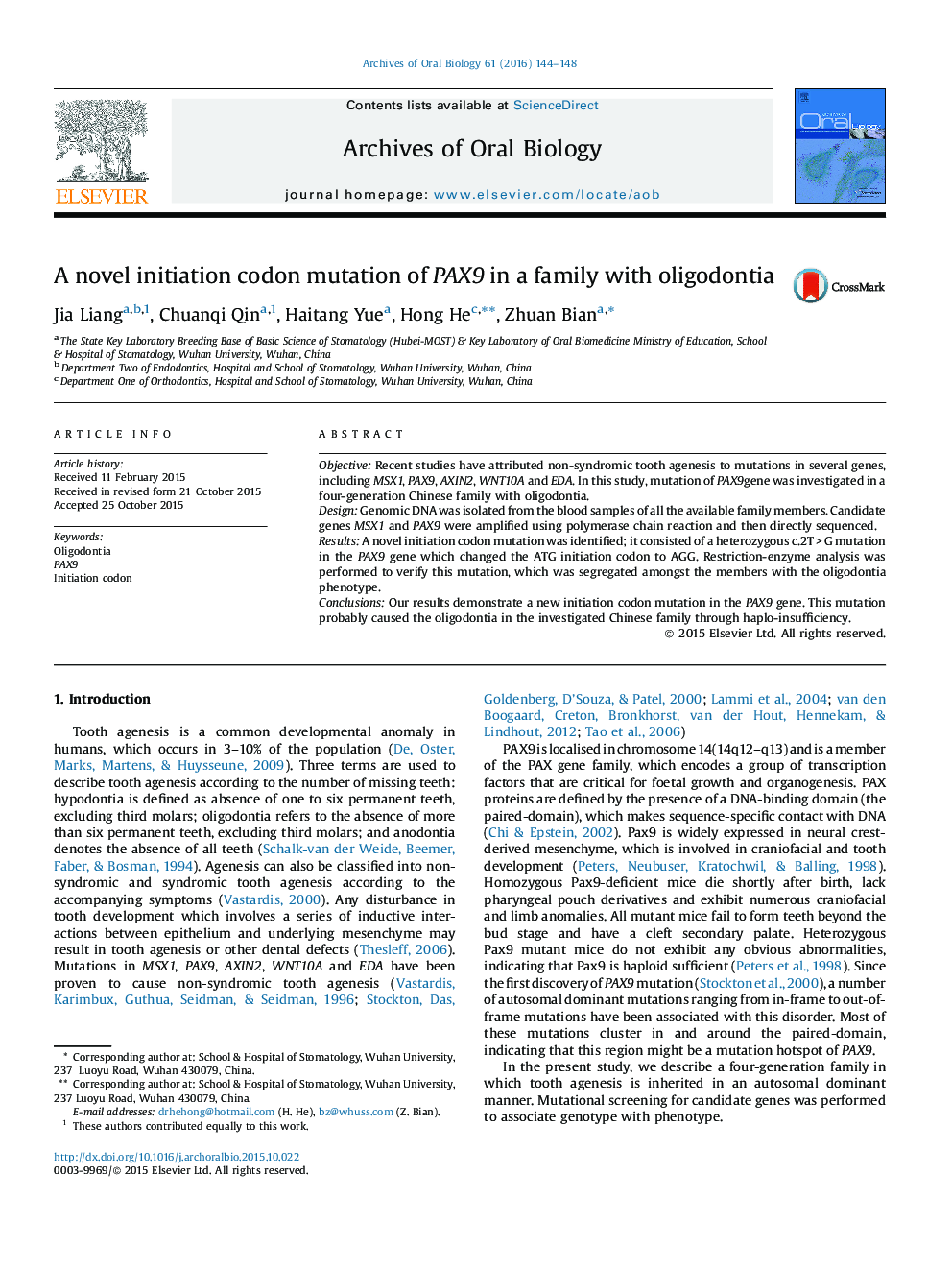| کد مقاله | کد نشریه | سال انتشار | مقاله انگلیسی | نسخه تمام متن |
|---|---|---|---|---|
| 3120736 | 1583292 | 2016 | 5 صفحه PDF | دانلود رایگان |

• A novel initiation codon mutation of PAX9 was associated with oligodontia.
• The initiation codon mutation causes inhibition of PAX9 translation at one allele.
• The initiation codon mutation inactivates one copy of PAX9 protein.
• Compared with in-frame mutations, truncating mutations caused more sever phenotypes.
ObjectiveRecent studies have attributed non-syndromic tooth agenesis to mutations in several genes, including MSX1, PAX9, AXIN2, WNT10A and EDA. In this study, mutation of PAX9gene was investigated in a four-generation Chinese family with oligodontia.DesignGenomic DNA was isolated from the blood samples of all the available family members. Candidate genes MSX1 and PAX9 were amplified using polymerase chain reaction and then directly sequenced.ResultsA novel initiation codon mutation was identified; it consisted of a heterozygous c.2T > G mutation in the PAX9 gene which changed the ATG initiation codon to AGG. Restriction-enzyme analysis was performed to verify this mutation, which was segregated amongst the members with the oligodontia phenotype.ConclusionsOur results demonstrate a new initiation codon mutation in the PAX9 gene. This mutation probably caused the oligodontia in the investigated Chinese family through haplo-insufficiency.
Journal: Archives of Oral Biology - Volume 61, January 2016, Pages 144–148